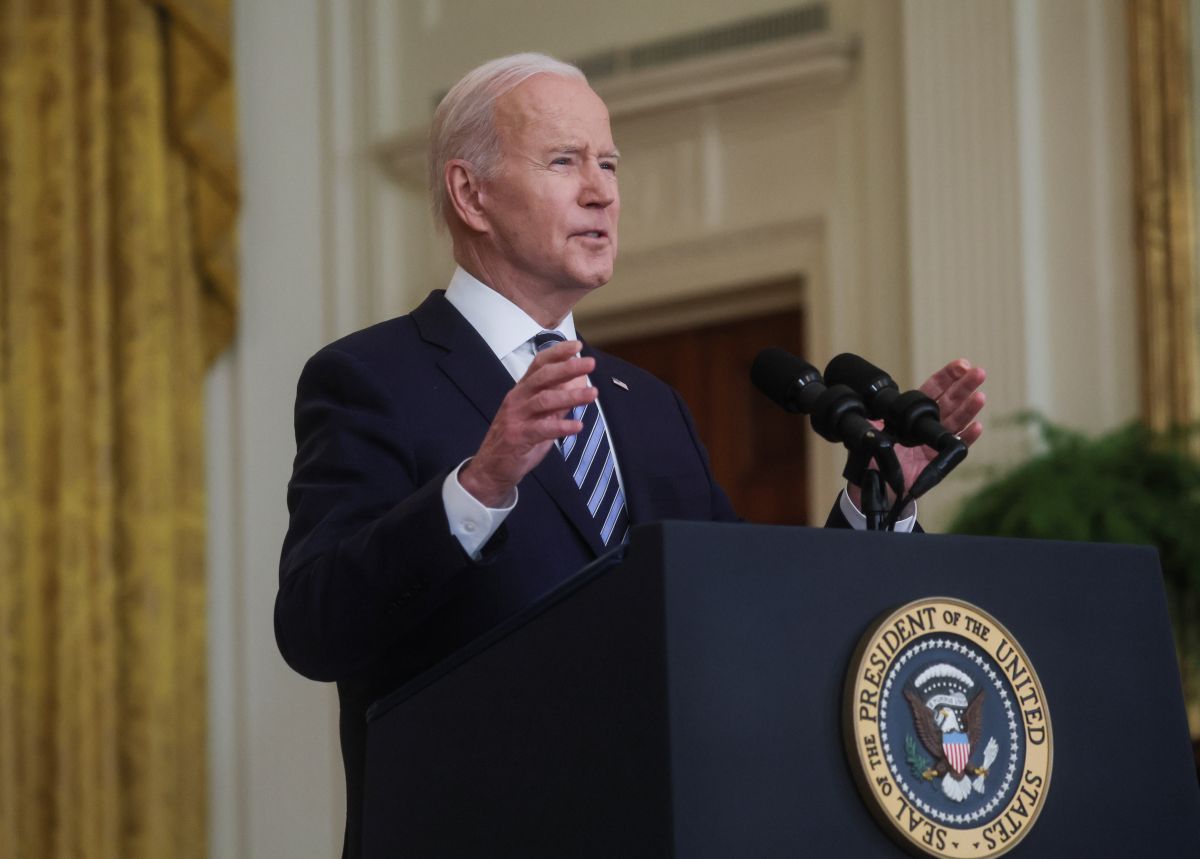The U.S. Response to Russia's Attack on Ukraine
In response, first to Russia’s recognition of the independence of the so-called “People's Republics” in Donbas and then to Russia’s invasion of Ukraine, the United States has introduced a range of sanctions and restrictions. The goal of the U.S. authorities is to punish Russia for this offensive and at the same time to provide aid to Ukraine, including military and humanitarian aid. The U.S. also increased its military presence in Europe, including on NATO’s Eastern Flank. The U.S. is coordinating its actions with the EU and the G7 countries.
 Fot. LEAH MILLIS/Reuters/Forum
Fot. LEAH MILLIS/Reuters/Forum
What sanctions and restrictions have the U.S. imposed on Russia?
President Joe Biden announced two packages of sanctions on 22 and 24 February. As part of them, Sberbank—Russia's largest financial institution—was cut off from the American financial system, and full blocking sanctions were imposed on VTB (the second-largest financial institution) and five other large banks. Trade in Russian sovereign debt has been banned, debt and equity transactions for 13 key companies of the Russian economy (including Gazprom, Transneft, and Rostelecom) have been restricted, as have exports of sensitive U.S. technologies for the defence, aircraft, and maritime sectors in Russia. Personal sanctions were also imposed on representatives of the government and elites, including on FSB Director Alexander Bortnikov and Secretary of the Security Council Nikolai Patrushev. Part of the first phase of the response was a change in approach to the Nord Stream 2 gas pipeline and the imposition of full blocking sanctions on its operator. In connection with Belarus’s support of Russia’s attack and recognition of it as an aggressor, the U.S. imposed sanctions on two Belarusian banks, nine companies in the defence sector, and seven individuals in its power structure and elites.
What action did the U.S. take next?
Subsequently, the imposition of personal sanctions on the President of Russia Vladimir Putin, Minister of Foreign Affairs Sergei Lavrov, Minister of Defence Gen. Sergei Shoygu, and Chief of General Staff of the Armed Forces Gen. Valery Gerasimov were announced. Full blocking sanctions were also imposed on the Russian Direct Investment Fund. The U.S., together with the EU and other G7 countries, announced the intention to take further coordinated action. They plan to cut off Russian banks from the SWIFT payment system and impose sanctions on the Russian Central Bank (the Treasury Department has already banned transactions with it, cutting it off from American assets), and to set up a special investigative group responsible for the implementation of sanctions (including search and seizure of the property of persons subject to sanctions), and to limit the sale of so-called “golden passports” granting citizenship of the issuing country.
What kind of aid is the U.S. providing to Ukraine?
Ukraine will receive an additional $600 million in aid, including $350 million in military aid (over the past year, the U.S. has provided Ukraine with a total of $1 billion in such aid). As part of the military support, Javelin launchers and anti-tank missiles, small arms, various types of ammunition, body armour, and other tactical equipment will be included. The U.S. also allocated an additional $54 million in humanitarian aid for Ukraine. The U.S. also provides Ukraine with intelligence, reconnaissance, and cyberspace support. Biden has asked Congress for an additional $6.4 billion to cover the needs of Ukraine and other Central and Eastern European countries (including Poland and the Baltic states). Of this amount, $2.9 billion is to be allocated to military, humanitarian, and economic aid, as well as to financing the strengthening of regional capabilities to defend against cyberthreats, and $3.5 billion would finance the activities of the Department of Defence and the U.S. armed forces in connection with the war caused by Russia.
How is the U.S. strengthening the security of NATO countries?
Shortly after the Russian attack on Ukraine, the U.S. decided to send 7,000 additional troops to Germany (an armoured brigade with support units), which later can be deployed to other NATO countries. Around 12,000 American troops in the U.S. and Europe are at a heightened level of readiness and can be deployed as part of the recently activated NATO Response Force. The U.S. will also contribute troops to a new NATO battle group in Slovakia.
In the weeks preceding the Russian invasion, the U.S. sent to Europe around 5,000 airborne soldiers, including some 4,700 to Poland (doubling the overall number of U.S. troops on Polish territory), and 12 F-35 fighters to Germany. The U.S. also doubled the number of destroyers in Europe (to 8) and prolonged the presence of an aircraft carrier strike group in the Mediterranean. Moreover, the U.S. shifted a number of forces already present in Europe to the Eastern Flank. Some 1,000 troops were sent to Romania, 800 to the Baltic states, and smaller units to Bulgaria and Hungary. Along with this, 32 AH-64 Apache attack helicopters were deployed to the Baltic states and Poland. Altogether around 30 fighter jets (F-15, F-16, F-35) are deployed to the Baltic states, Poland, and Romania.
How do American politicians view the U.S. response?
Most in Congress from the two major parties have positively assessed the U.S. response to Russia’s aggression so far, avoiding criticism of Biden. This signals bipartisan support for possible government initiatives that would require a vote by Congress. Republicans, however, are pushing for further sanctions against Russia, especially in the energy and extractive sectors. The co-chairs of the Caucus Against Foreign Corruption and Kleptocracy presented a bipartisan bill that would impose personal sanctions on 35 representatives of Russia’s elite who are highly important to the government. Senator Marco Rubio, the ranking member in the Senate Intelligence Committee, announced a bill sanctioning people who would join any new Ukrainian government installed by Russia. Republicans are also calling for the adoption of the NYET Act, which includes sanctions on more Russian banks and secondary sanctions against banks undertaking transactions with financial institutions from Russia, more personal sanctions against elites and oligarchs, $500 million in military assistance to Ukraine, and enabling the transfer or loan of property from the defence sector to Ukraine, using lend-lease provisions.



